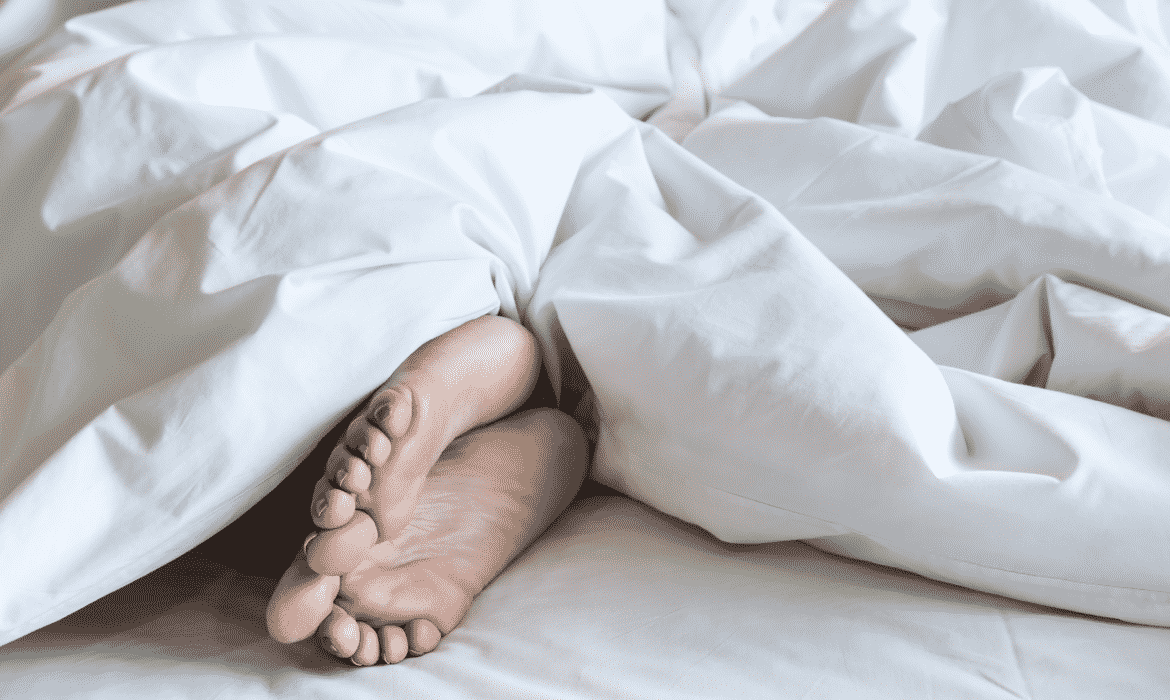We all need hugs, but some children, especially those with sensory disorders, are seeking better sleep with the gentle pressure of a weighted blanket.
Though they have long been used for children with autism spectrum disorder (ASD), weighted blankets have recently exploded in popularity. Filled with small pellets, weighted blankets apply gentle, soothing pressure that some say promotes relaxation, reduces anxiety and fosters better sleep.
Despite weighted blankets’ surging popularity, there are not yet research studies that show they specifically promote sleep in either children with ASD or in the general population.
Samantha Mitchell, a pediatric occupational therapist with the Shirley Ryan AbilityLab in Chicago, has noticed that more people are asking her about weighted blankets.
“It’s become a trendy, hot topic,” Mitchell says. “I have people reaching out to me —friends and family members — who ask my opinion on them. They’ve heard from other people that they work.”
Weighted blankets usually weigh anywhere from 2 to 24 pounds and are filled with glass or plastic pellets. Manufacturers typically recommend that the blankets weigh about 10 percent of your body weight. They are not recommended for children under age 2.
The concept of applying deep pressure to reduce anxiety can be linked to Temple Grandin, PhD. On the autism spectrum herself, Grandin gained fame in the autism community and beyond when she noticed that placing cattle in a squeeze chute to receive vaccinations calmed them. It led her to develop a similar squeeze device or hug box for humans.
Like a squeeze box, weighted blankets apply pressure that some people, both on and off the autism spectrum, find soothing.
Still there is not specific independent evidence that the blankets promote sleep. A 2014 study published in the journal Pediatrics about the effectiveness of using weighted blankets to treat severe sleep problems in children with ASD failed to find that they helped the children sleep for a longer period of time, fall asleep significantly faster or wake less often. However, the weighted blankets were favored by children and parents and were well tolerated, researchers found.
“The parents and children preferred them,” says Pranshu Adavadkar, MD, assistant professor of pediatrics at the University of Illinois at Chicago, who specializes in sleep disorders. “They felt the blankets were more comforting, and they felt their sleep was better.”
When talking with her patients about weighted blankets, Mitchell says she notes the lack of evidence from independent research but leaves it up to parents to decide whether to try a weighted blanket to help their children with ASD sleep better.
And while Mitchell primarily treats pediatric patients with neurological disorders, she has also seen weighted blankets used as a sleep intervention for autism, sensory processing disorder, attention-deficit/hyperactivity disorder, post-traumatic stress disorder, traumatic brain injury, chronic pain, stress, anxiety, mental illness and Rett syndrome.
“In my experience I’ve found great benefits from weighted blankets for children [on the autism spectrum],” Mitchell says. “Most parents will know if their kids seek deep pressure with squeezes, massages or hugs.”
King- and queen-size weighted blankets usually cost about $100 to $250 or more; twins are in the $50 to $150 range.
If cost is an issue, Mitchell recommends looking into heavier blankets (not marketed necessarily as weighted blankets), compression sheets, compression garments or tucking children in tighter (but not restrictively) to see if it helps them sleep.
Mitchell says it is common in occupational therapy to use other methods of applying pressure to calm children with ASD including Lycra body socks or swings, weighted lap pads, weighted vests, joint compressions and squeeze/hug machines like the one Grandin developed.
Mitchell says weighted blankets may help children who are non-verbal to calm themselves because they may be unable to verbalize what they need or how much pressure they want.
“It’s a way for them to self-nurture, self-soothe and to actively engage in self-care,” she says. “They can roll up and cuddle in a safe environment and give themselves the level of pressure they want.”
Adavadkar does not recommend weighted blankets for his patients — whether or not they have a sensory disorder — because research has not yet shown that they promote sleep. Still, in his private practice, he finds parents of children with sensory disorders are asking about them.
“There is a pretty good parent population who wants to try everything to get their children to sleep,” he says. If a parent decides to use a weighted blanket for a child with ASD, he advises that they work with the child’s therapist to decide suitability and safety.
“A therapist could guide the decision and help them choose the right weight,” he says.
Adavadkar says improving the sleep environment — turning off electronics, maintaining a sleep-conducive setting and establishing a consistent bedtime routine — is the basis for promoting good sleep.
Sleep problems in children, he notes, can be caused by a range of problems from behavioral problems to enlarged adenoids or tonsils. If a problem persists, then identifying the problem through a patient’s sleep history and perhaps a sleep study are the next steps.
“A sleep problem is such a broad term,” he says. “It all boils down to getting a detailed history. The first thing is to identify the problem. A weighted blanket may be a distraction to some degree, [but] you aren’t fixing the underlying problem.”
Mitchell believes weighted blankets can be beneficial to many people without a significant downside.
“I think they can be very soothing and calming and am interested in trying one myself,” she says.












